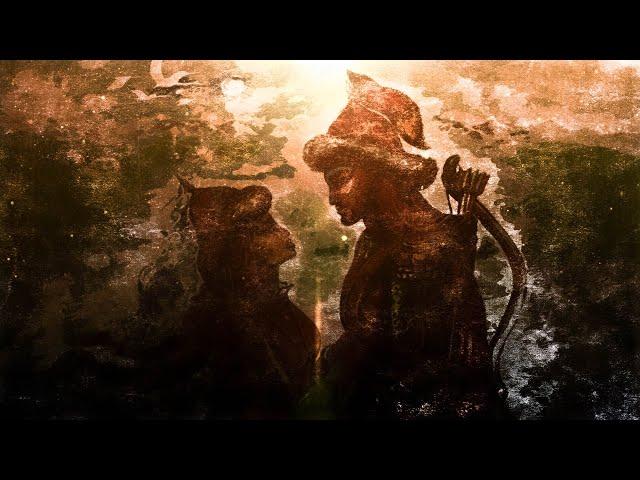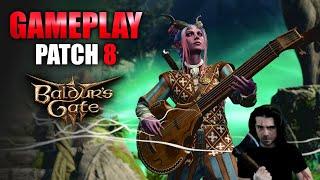
Ili and Karatal - Epic Turkic Music
Music composed by Farya Faraji. This is a composition mostly rooted in the folklore and music of Kazakhstan with elements from Siberian and Altai Turkic music. There is a folk tale in Kazakhstan about a wizard called Balkhash. He had a beautiful daughter called Ili, and he wanted to find a suitor for her. Enthralled by her beauty, many beys and lords approached and participated in a contest to win her hand. Thus came Karatal, most handsome and strongest of all the men, and Ili fell in love with him. Young and strong Karatal won all the contests, but Balkhash refused to have a poor shepherd as his son-in-law, and so he broke his promise and refused Karatal his daughter's hand. Ili was heartbroken, but Karatal offered to elope with her, and so they both fled on horseback. Rageful, Balkhash used his magic to create a great lake, and he turned Ili into a river, and Karatal into another one. This is why, to this day in Kazakhstan, the river Balkhash eternally lies between the rivers Ili and Karatal, and both rivers for many centuries have been seething and rolling, trying in vain to merge into one, but to no avail, and they will never join again, forever kept apart by lake Balkhash.
The composition is primarily rooted in the musical tradition of Kazakhstan, where the dombra is the primary instrument as used here, and I used elements of the heptatonic Aeolian and Phrygian modes, which are indeed very present in Kazakh music, the latter often helping demarcate it from more eastern Turkic traditions like Altai or Siberian Turkic music. Another aspect of Kazakh music I employed is the usage of two-note chords; the dombra is not played in a strictly melodic manner like the Iranian tanbur or Turkish baglama are, but instead, it always uses the thumb to accompany certain notes of the leading melody with consonant harmonic intervals, which gives Kazakh music a distinctive sound. Related harmonic two-note techniques are also found in Turkmen music, at least that of Iran, which I can attest as I grew up around the Iranian Turkmens as a child. The overtone throat singing is more creative on my part, as Kazakh music does not have a native tradition of overtone throat singing in its traditional music., though there is a slight revival with neo-folk bands in Kazakhstan like the Turan Ensemble using it. I used throat singing as a stylistic gesture to allude to the Turkic brethren of the Kazakhs in the Altai and Siberia, as this tale seems to have precedence in those lands which are the ancestral ones of all Turks; therefore alluding to the remote past of the Kazakhs through the usage of throat singing.
The composition is primarily rooted in the musical tradition of Kazakhstan, where the dombra is the primary instrument as used here, and I used elements of the heptatonic Aeolian and Phrygian modes, which are indeed very present in Kazakh music, the latter often helping demarcate it from more eastern Turkic traditions like Altai or Siberian Turkic music. Another aspect of Kazakh music I employed is the usage of two-note chords; the dombra is not played in a strictly melodic manner like the Iranian tanbur or Turkish baglama are, but instead, it always uses the thumb to accompany certain notes of the leading melody with consonant harmonic intervals, which gives Kazakh music a distinctive sound. Related harmonic two-note techniques are also found in Turkmen music, at least that of Iran, which I can attest as I grew up around the Iranian Turkmens as a child. The overtone throat singing is more creative on my part, as Kazakh music does not have a native tradition of overtone throat singing in its traditional music., though there is a slight revival with neo-folk bands in Kazakhstan like the Turan Ensemble using it. I used throat singing as a stylistic gesture to allude to the Turkic brethren of the Kazakhs in the Altai and Siberia, as this tale seems to have precedence in those lands which are the ancestral ones of all Turks; therefore alluding to the remote past of the Kazakhs through the usage of throat singing.
Тэги:
#epic_turkic_music #farya_faraji_epic_turkic_music #orkhon_old_turkic_rap #epic_turkic_music_steppes #epic_mongolian_music #epic_turkic_music_gokturks #epic_gokturk_music #farya_faraji_epic_music #tonyukuk #bilge_khan #bilge_qaghan #orkhon_rap #toquz_oyuz_epic_music #orkhon_epic_music #turan_ensemble #dombra_epic_music #ertugrul_epic_musicКомментарии:
Ili and Karatal - Epic Turkic Music
Farya Faraji
Khansa bernyanyi dan menari
Dunia Khansa CB
21. Basic overview of oracle integration generation 3 | Oracle Integration Actions | OIC Tutorials
Fox Oracle Apps Solutions
Can Mechanical, Electrical, Civil Any Branch Student Write GATE CSE Exam in Hindi
Ujjwal Kumar Sen Clips
Planet Eclipse EGO LV2 Firing Cycle
planeteclipsetv
Frequently Asked Questions About OBC Reservation
Just Get MBBS
National Weather Update 3 July 2024: Icy temperatures forecast for southern Australia
Bureau of Meteorology
Disappearing for 3 months changed my life…
Joseph G. Khoury


























